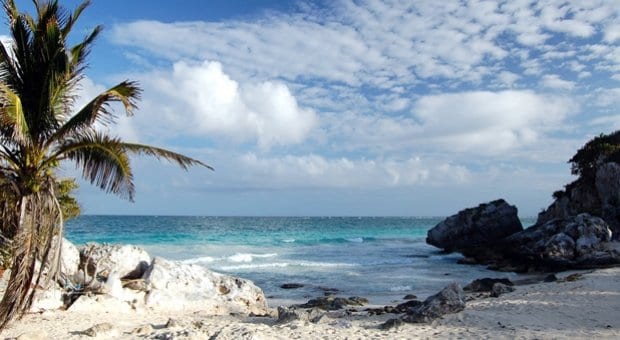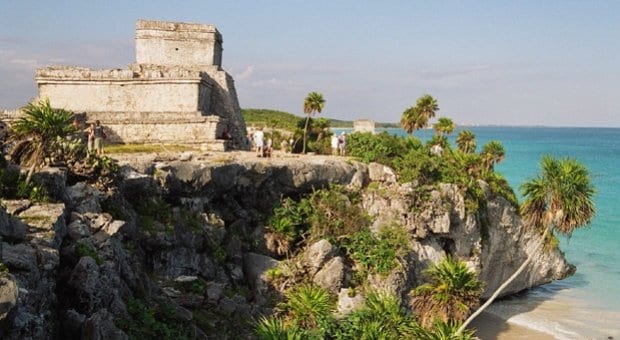
Beaches near Tulum are protected for nesting sea turtles. Credit: MINDAUGAS DANYS
Sitting dramatically atop steep cliffs, overlooking the beautiful Caribbean Sea along the southern coastline of the Mexican state of Quintana Roo, are the ruins of Tulum. This ancient Mayan city dates back to the 13th century and has captivated tourists from Cancun (130 kilometres north) and Playa del Carmen (65 kilometres north) for decades. More recently, however, there has been a shift in tourists coming to the area not just to visit the ruins, but actually choosing to stay in modern-day Tulum.
The rise in Tulum’s appeal tracks closely with Cancun’s growth and commercialization. Visitors looking for an “authentic Mexican experience” appreciate the fact that much of Tulum has — so far — been able to stave off massive development.
Whereas Cancun’s beaches are bordered by large, high-rise resorts, Tulum’s beaches — ranked among the best in the world — still have large sections flanked only by lush jungle. In addition, most of the sleeping options near the beach are small hotels, typically fewer than 100 rooms and only one- or two-storeys high. The quality of these hotels varies greatly — from the dubious to the luxurious — so it’s important to do your research (and even then, a backup plan is advised). In addition, the majority also operate “off the grid,” relying solely on generators or solar or wind power.
If the eco-friendly, bohemian nature of the beach hotels is not your style, there are additional options in Tulum’s commercial area, or “El Pueblo.” The quality of accommodation in this area also runs the gamut, but access to electricity isn’t an issue. In addition, while you will have to travel to the water, you can easily walk to many shopping, dining and nightlife options that simply don’t exist in the vicinity of the beach.
Much like Cancun and Playa del Carmen, Tulum’s to-do list consists of relaxing on the beach, snorkelling the reef and touring the various Mayan ruins. There is also the option of exploring the vast network of cenotes — natural sinkholes that are often filled with water. Many of the cenotes are completely underground and the geological formations within are breathtaking.
While LGBT travellers are common in Tulum and many of the hotels and businesses are LGBT-owned or -operated, there are no establishments that cater specifically to the LGBT community. However, the calm, relaxed nature of Tulum makes it a generally welcoming destination for everyone.
Read more about Tulum and the Mayan Riviera.
For the most up-to-date travel information on gay Cancun, see our City Guide, Listings Guide, Events Guide and Activities Guide.

 Why you can trust Xtra
Why you can trust Xtra